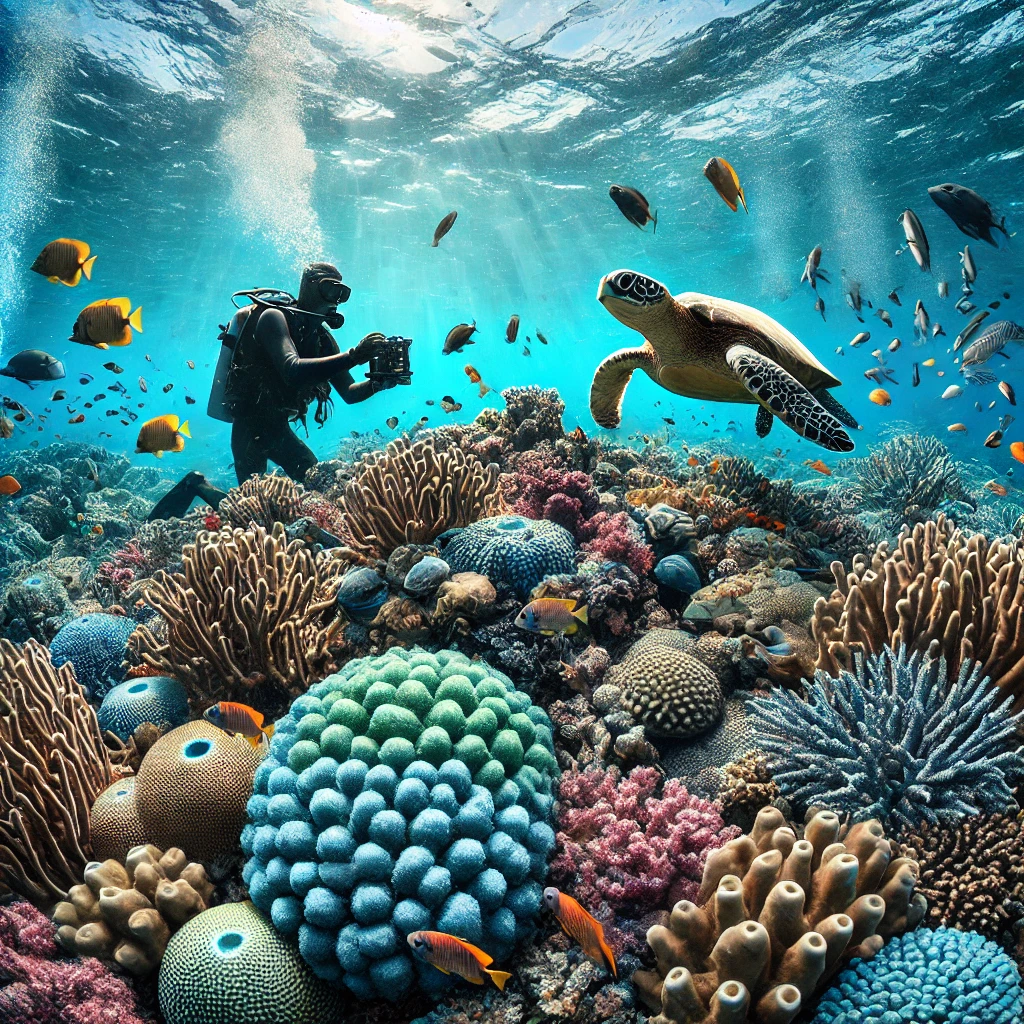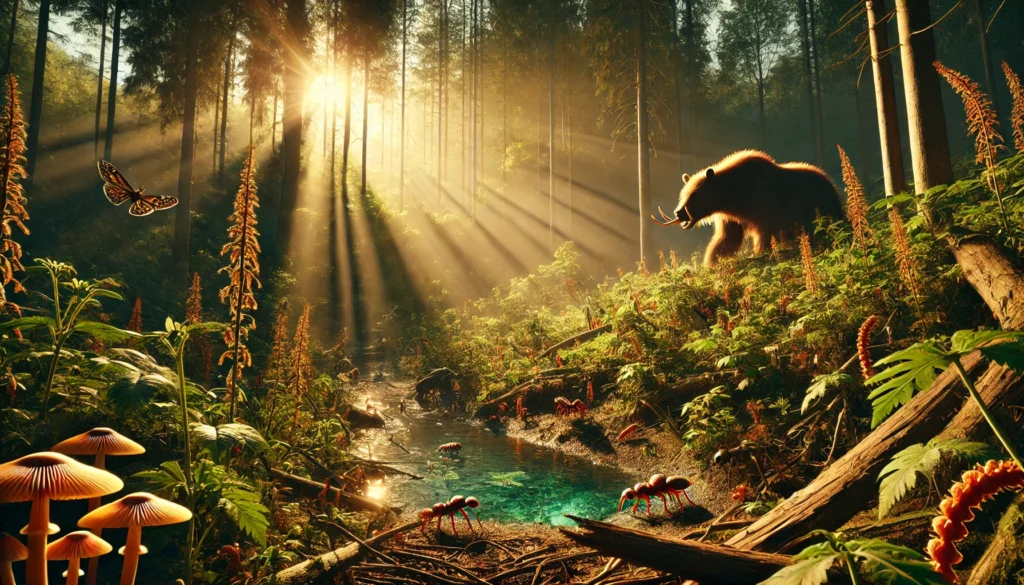Ahoy there, ocean enthusiasts and landlubbers alike! Ever wondered what’s happening beneath the waves while you’re busy slathering on sunscreen and building sandcastles? Well, buckle up (or should I say, strap on your scuba gear), because we’re about to take a deep dive into the world of Marine Protected Areas (MPAs). These underwater havens are like gated communities for fish, coral, and all sorts of salty critters. But instead of keeping out door-to-door salesmen, they’re fending off overfishing, pollution, and other human-induced shenanigans that threaten our oceans. So grab your snorkel, and let’s explore why MPAs are the unsung heroes of the sea, keeping our underwater friends safe and sound (and hopefully off our dinner plates).
What in the Kelp Forest is a Marine Protected Area?
Defining the Indefinable (Sort of)
Picture this: you’re a fish, minding your own business, swimming along, when suddenly you cross an invisible line and – bam! – you’re in a whole new world. Well, not really, but that’s kind of what a Marine Protected Area is like. It’s a designated chunk of ocean where human activities are more restricted than in the surrounding waters. Think of it as a VIP section for marine life, where the bouncers are scientists and policymakers instead of burly guys with earpieces.
MPAs come in all shapes and sizes, from tiny reserves that protect a single coral reef to vast ocean wildernesses that cover thousands of square miles. They can be found in coastal waters, the open ocean, and even in the frigid polar regions. Some MPAs are as strict as a boarding school run by nuns, prohibiting all fishing and other extractive activities. Others are more like a laid-back summer camp, allowing some sustainable use of resources. The common thread? They all aim to protect marine ecosystems and the creatures that call them home.
But why do we need these aquatic safe spaces? Well, let’s just say that humans haven’t exactly been the best neighbors to our ocean-dwelling pals. Overfishing, pollution, coastal development, and climate change have all taken their toll on marine ecosystems. MPAs are like a giant “time out” for humans, giving marine life a chance to recover and thrive without us meddling in their affairs. It’s like we’re saying, “Sorry about all that plastic, guys. Here’s a nice, protected area to make up for it!”
The ABCs of MPAs: Types and Levels of Protection
No-Take Zones: The VIP Lounges of the Sea
Imagine a nightclub where fish are the celebrities, and humans are the paparazzi trying to sneak a peek (or a catch). No-take zones are the exclusive VIP areas of this underwater club, where fishing and other extractive activities are strictly prohibited. These areas are the marine equivalent of “look, but don’t touch” museums, except instead of priceless artifacts, we’re preserving priceless ecosystems.
No-take zones are the gold standard of marine protection. They’re like gated communities for fish, where they can live out their days without worrying about ending up on someone’s dinner plate. These areas are crucial for allowing fish populations to recover and for maintaining biodiversity. Plus, they give scientists a glimpse of what marine ecosystems looked like before humans started throwing plastic six-pack rings into the mix.
Multiple-Use Areas: The All-Access Pass (with Some Restrictions)
Not all MPAs are as strict as no-take zones. Multiple-use areas are like the general admission section of our marine nightclub. Here, some human activities are allowed, but they’re carefully managed to ensure they don’t harm the marine environment. It’s like a compromise between complete protection and human needs – we can have our fish and eat it too, as long as we do it responsibly.
In multiple-use MPAs, you might see activities like sustainable fishing, eco-tourism, or even carefully managed resource extraction. It’s all about finding that sweet spot between conservation and human use. Think of it as a marine version of “reduce, reuse, recycle” – we’re trying to use ocean resources in a way that doesn’t leave future generations with nothing but empty seas and sad dolphins.
Seasonal or Temporary MPAs: The Pop-Up Shops of Ocean Conservation
Sometimes, marine life needs protection that’s more “here today, gone tomorrow” than “forever and always.” That’s where seasonal or temporary MPAs come in. These are like the pop-up shops of ocean conservation, appearing when they’re needed most and then disappearing when the crisis has passed.
Seasonal MPAs might be established to protect breeding grounds during mating season or to safeguard migratory species as they pass through an area. It’s like giving marine animals their own version of a maternity ward or a highway rest stop – a safe place to do what they need to do before moving on. These flexible MPAs show that conservation can be adaptable and responsive to the changing needs of marine ecosystems.
The Benefits of MPAs: More than Just a Fish Story
Biodiversity Bonanza: It’s Like Noah’s Ark, But Wetter
One of the biggest perks of MPAs is their ability to preserve and enhance biodiversity. It’s like creating an underwater version of Noah’s Ark, except instead of saving two of each animal, we’re trying to save entire ecosystems. MPAs provide safe havens for a wide variety of marine species, from the tiniest plankton to the mightiest whales.
By protecting these areas from harmful human activities, MPAs allow marine populations to recover and thrive. It’s like giving the ocean a chance to hit the reset button and return to its natural state. Studies have shown that MPAs often have higher species diversity, larger fish populations, and healthier ecosystems compared to unprotected areas. It’s not just good news for the fish – it’s great news for the entire marine food web, from the smallest algae to the largest predators.
Fisheries Management: Giving Fish a Fighting Chance
MPAs aren’t just about saving cute sea turtles and colorful coral reefs (although that’s certainly a nice bonus). They also play a crucial role in fisheries management. It’s like creating a fish nursery where the little ones can grow up big and strong before venturing out into the big, bad ocean.
By protecting breeding grounds and allowing fish populations to recover, MPAs can actually help support sustainable fisheries in the long run. It’s a classic case of short-term pain for long-term gain. Sure, fishermen might grumble about not being able to fish in certain areas, but in the end, those protected areas can lead to more abundant fish stocks overall. It’s like investing in a fish savings account – you might not be able to touch it now, but it’ll pay off big time in the future.
Climate Change Mitigation: The Ocean’s Secret Weapon
Here’s a fun fact that’ll make you the hit of your next dinner party (or at least impress your cat): healthy marine ecosystems can help fight climate change. That’s right, MPAs aren’t just protecting fish – they’re helping to save the entire planet. Talk about overachievers!
Coastal ecosystems like mangroves, seagrass beds, and salt marshes are incredibly effective at sequestering carbon dioxide from the atmosphere. They’re like the ocean’s version of a carbon capture machine, except instead of fancy technology, they use the power of nature. By protecting these ecosystems, MPAs are helping to keep carbon locked away in what scientists call “blue carbon” sinks. It’s like having an underwater army fighting climate change on our behalf. Who knew seaweed could be so heroic?
The Challenges: It’s Not All Smooth Sailing
Enforcement: The Maritime Game of Cat and Mouse
Creating an MPA is one thing, but enforcing it? That’s a whole other kettle of fish (pun absolutely intended). Imagine trying to police an area that’s mostly underwater and potentially thousands of square miles in size. It’s like playing a giant game of hide-and-seek, except the hiders are illegal fishing boats and the seekers are vastly outnumbered coast guard vessels.
Enforcement challenges range from lack of resources (turns out, patrol boats don’t grow on trees) to the sheer difficulty of monitoring vast ocean areas. Some countries have turned to high-tech solutions like satellite monitoring and drones, while others rely on more traditional methods like patrol boats and community watchdog programs. It’s a constant battle to keep MPAs truly protected, but hey, nobody said saving the ocean would be easy.
Stakeholder Conflicts: When Fish and Fishermen Disagree
Establishing an MPA often involves more drama than a reality TV show. On one side, you have conservationists and scientists pushing for more protection. On the other, you have fishermen, coastal communities, and industries that rely on marine resources. It’s like trying to plan a family reunion where half the family wants to go vegan and the other half owns a steakhouse.
Balancing the needs of conservation with the livelihoods of local communities is a delicate dance. It often requires extensive negotiations, compromise, and sometimes a bit of creative problem-solving. The goal is to create MPAs that protect marine ecosystems while also ensuring that local communities can still benefit from ocean resources in sustainable ways. It’s not always easy, but when it works, it’s a win-win for both humans and marine life.
Climate Change: The Uninvited Guest at the MPA Party
Just when you thought MPAs had enough on their plate, along comes climate change to crash the party. Rising sea temperatures, ocean acidification, and changing ocean currents are throwing a wrench into even the best-laid conservation plans. It’s like trying to protect your sandcastle from the waves when the entire beach is slowly being washed away.
Climate change poses a significant challenge to MPAs, potentially altering the very ecosystems they’re designed to protect. Species may shift their ranges, coral reefs may bleach, and entire food webs may be disrupted. MPAs need to be designed with climate resilience in mind, and managers need to be ready to adapt their strategies as conditions change. It’s a bit like playing chess against an opponent who keeps changing the rules – challenging, but not impossible.
The Global Picture: MPAs Around the World
MPA Coverage: Are We There Yet?
So, how are we doing on the whole “protecting the ocean” front? Well, it’s a bit of a good news/bad news situation. Let’s break it down with some numbers:
| Year | Global MPA Coverage |
|---|---|
| 2000 | 0.7% |
| 2010 | 2.4% |
| 2020 | 7.6% |
Looks pretty good, right? We’re making progress! But here’s the catch: the international community set a target of protecting 10% of coastal and marine areas by 2020 as part of the Aichi Biodiversity Targets. So while we’ve come a long way, we’re still falling short of our goals. It’s like training for a marathon and only making it to mile 20 – impressive, but not quite there yet.
Regional Differences: The MPA World Tour
MPAs aren’t evenly distributed around the world. Some regions are leading the charge, while others are lagging behind. Let’s take a whirlwind tour:
- North America: The U.S. and Canada have been MPA enthusiasts, with large protected areas in places like the Northwest Hawaiian Islands and the Great Bear Rainforest.
- Europe: The European Union has been pushing for more MPAs, with countries like the UK and France making significant strides.
- Australia: The Land Down Under is also leading in ocean protection, with the Great Barrier Reef Marine Park being a shining example (despite facing its own challenges).
- Asia: Progress has been slower in many Asian countries, but there are bright spots like the Coral Triangle Initiative.
- Africa: Some African nations have made impressive commitments, like Seychelles pledging to protect 30% of its waters.
- South America: Countries like Chile have created massive MPAs, while others are still in the early stages.
It’s like a global race to protect the oceans, with some countries sprinting ahead and others still tying their shoelaces at the starting line.
The Future of MPAs: Crystal Ball Not Included
Expanding Coverage: Thinking Big (and Blue)
The push for more and bigger MPAs is likely to continue in the coming years. There’s a growing movement to protect 30% of the world’s oceans by 2030, known as the “30 by 30” initiative. It’s like we’ve realized that our current efforts are more of a band-aid when what we really need is major surgery.
Large-scale MPAs, covering vast areas of the open ocean, are becoming more common. These areas protect not just coastal ecosystems, but also the high seas and deep ocean habitats that we’re only just beginning to understand. It’s like we’re finally acknowledging that the ocean is more than just the bit we can see from the beach.
Improving Management: Working Smarter, Not Just Harder
Creating an MPA is just the first step – managing it effectively is where the real challenge lies. The future of MPAs will likely involve smarter, more adaptive management strategies. This could include:
- Better use of technology for monitoring and enforcement
- More involvement of local communities in MPA management
- Adaptive management approaches that can respond to changing conditions
- Improved coordination between different MPAs to create networks of protected areas
It’s like upgrading from a flip phone to a smartphone – we’re not just doing more, we’re doing it more efficiently and effectively.
Addressing Climate Change: The Elephant (Seal) in the Room
As climate change continues to impact our oceans, MPAs will need to evolve to meet this challenge. This might involve:
- Designing MPAs to protect areas that are more resilient to climate change
- Creating “climate refugia” – areas that can serve as sanctuaries for species affected by warming waters
- Incorporating climate adaptation strategies into MPA management plans
- Using MPAs as natural laboratories to study the impacts of climate change on marine ecosystems
It’s like we’re not just playing defense anymore – we’re trying to anticipate where the puck (or in this case, the warming ocean) is going to be.
The Final Splash
As we wrap up our deep dive into the world of Marine Protected Areas, it’s clear that these underwater sanctuaries are more than just lines on a map. They’re our best hope for preserving the incredible diversity and beauty of our oceans for future generations. From tiny no-take zones to vast ocean wildernesses, MPAs are working hard to give our marine friends a fighting chance in a world that hasn’t always been kind to them.
But let’s not kid ourselves – we’ve still got a long way to go. Creating and managing effective MPAs is no easy task, and we’re up against some pretty big challenges, from enforcement difficulties to the looming threat of climate change. It’s like trying to bail out a leaky boat while also learning to salsa dance – tricky, but not impossible.
The good news is that we’re making progress. More and more of our oceans are being protected each year, and we’re getting better at managing these areas effectively. It’s a bit like watching a coral reef recover – slow, but incredibly rewarding.
So, what can you do? Well, for starters, you can support organizations working to create and manage MPAs. You can make sustainable choices in your daily life to reduce your impact on the oceans. And most importantly, you can spread the word about the importance of MPAs. After all, the more people who care about our oceans, the better chance we have of protecting them.
Remember, every time you dip your toes in the ocean or enjoy a day at the beach, you’re benefiting from the health of our marine ecosystems. MPAs are working hard behind the scenes (or should I say, beneath the waves) to keep those ecosystems thriving. So next time you’re enjoying a beach vacation, raise a glass (preferably not plastic) to the unsung heroes of the sea – Marine Protected Areas. They may not wear capes, but they’re definitely saving the world, one fish at a time.
Disclaimer: This blog post is based on information available up to 2020. While we strive for accuracy, the field of marine conservation is constantly evolving. Please check the latest scientific research and reports for the most up-to-date information on Marine Protected Areas. If you spot any inaccuracies, please let us know so we can correct them promptly. Remember, when it comes to ocean conservation, we’re all in the same boat!




